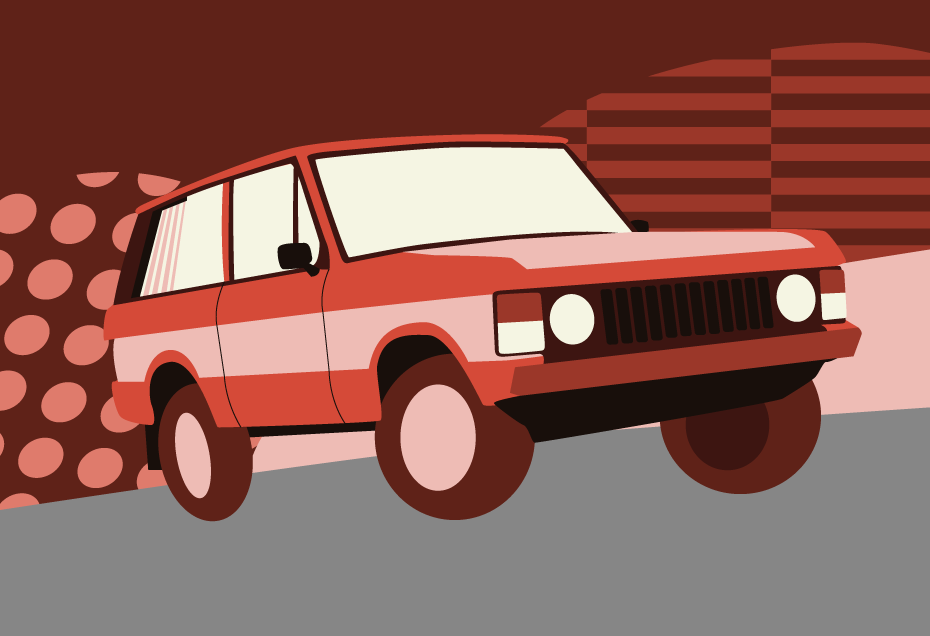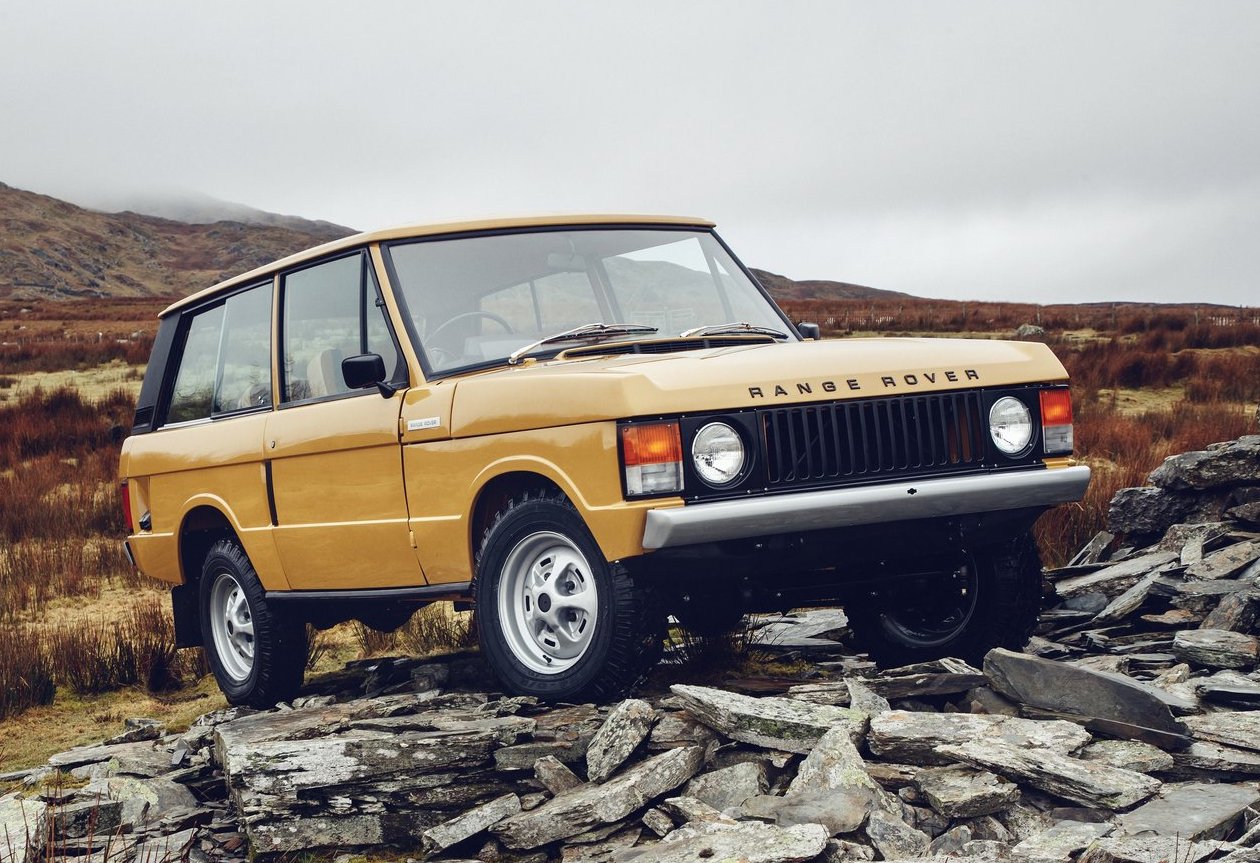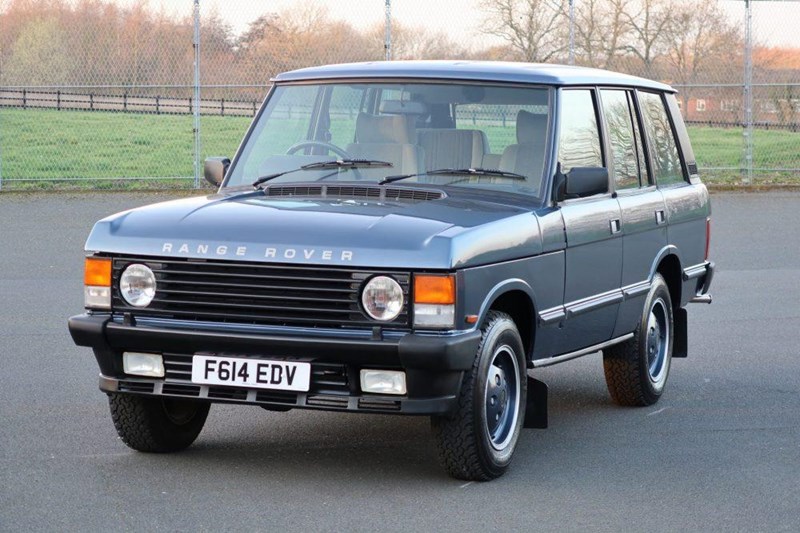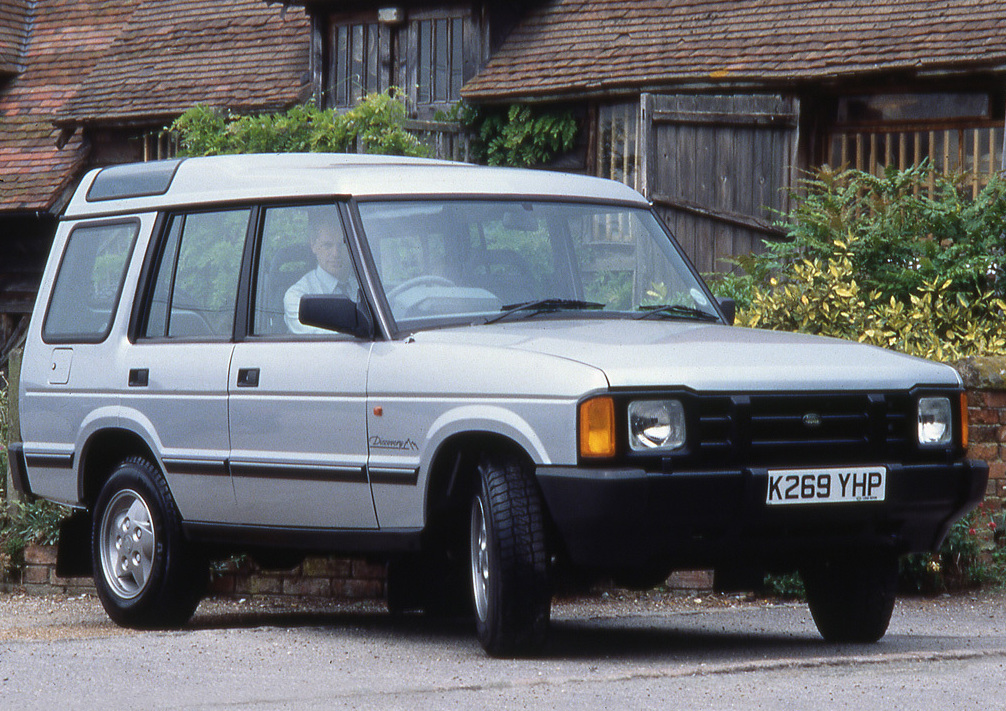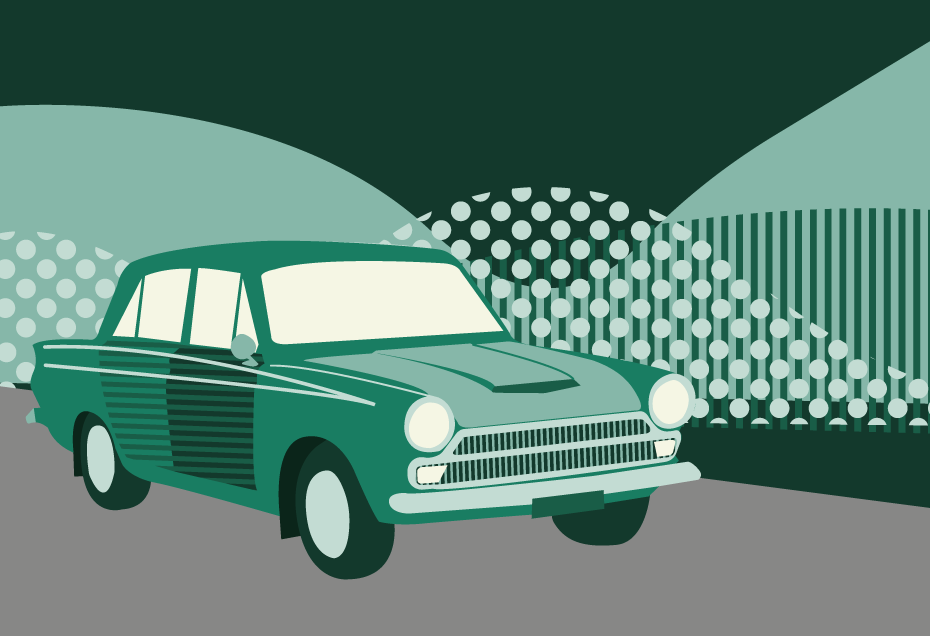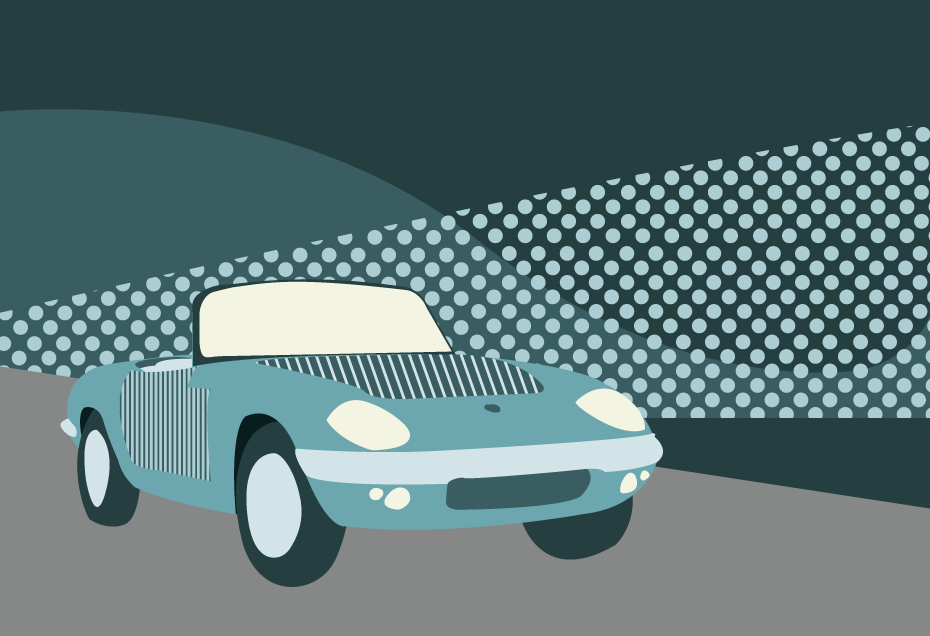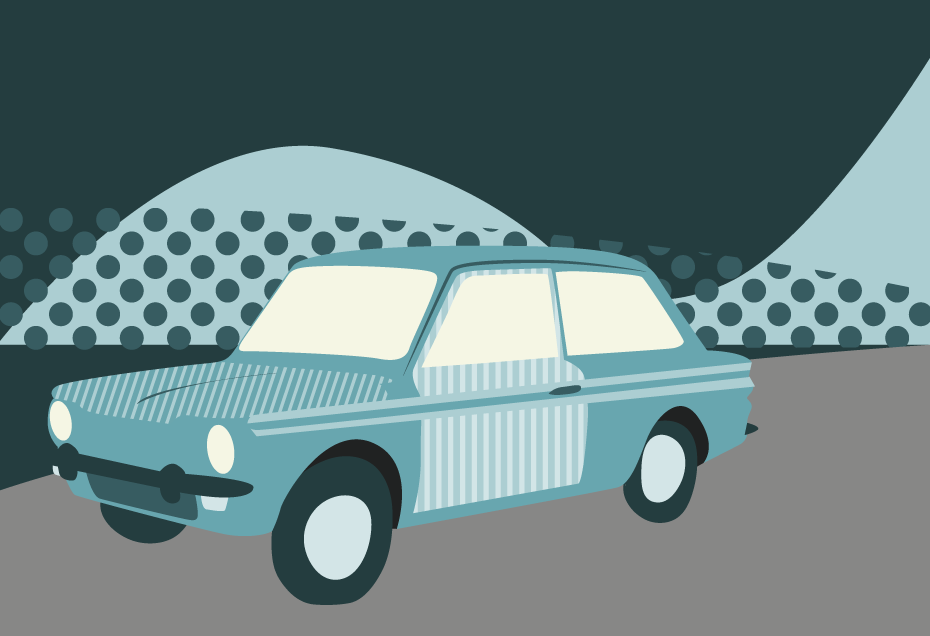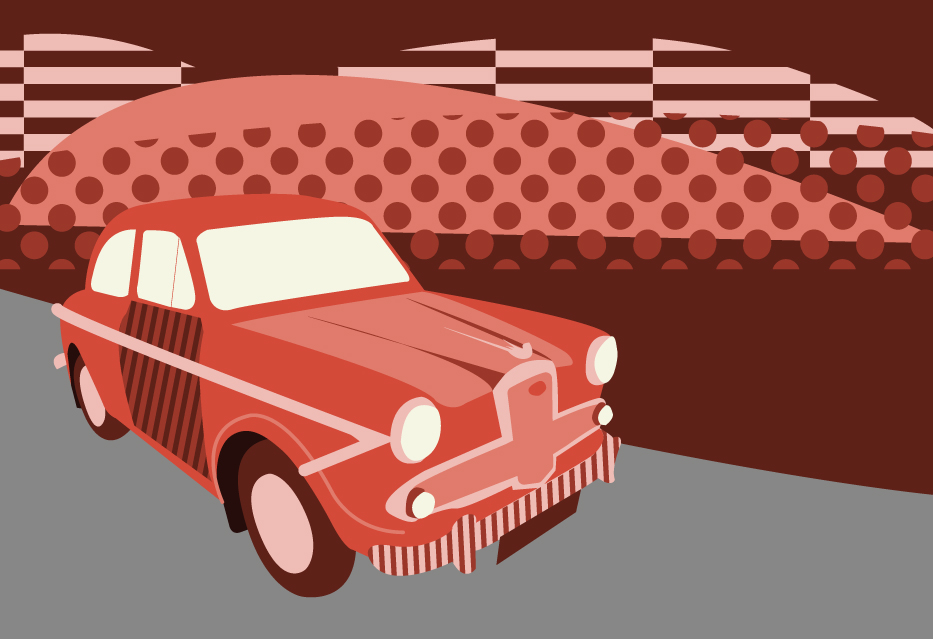Range Rover has come a long way since its launch, evolving from hose-it-out workhorse with plastic seats and rubber floors to the world’s swankiest, most luxurious off-roader.
The brand even created an entirely new category of vehicle – what, today, we call an SUV.
We look back at what made the classic Range Rover one of the most revered British cars of all time.
When a successful car is in production, ostensibly unchanged for many years, contemporary road test reports throughout its life tend to follow a pattern.
First, there’s the launch in a blaze of glory, high praise and glowing headlines, followed by a period when new competitors line up to challenge, at least one of which will ultimately steal its crown.
Finally, it becomes an anachronism, roundly rubbished by the motoring press as out of date, outclassed by more modern machines and well past its sell-by date.
The MGB and VW Beetle, though well-loved and still selling well at their demise, are cases in point.
But that is not the story of the Range Rover.
So good was the car at launch in 1970 that nothing could get near, let alone realistically challenge, the first generation vehicle throughout its 26-year lifespan.
That its modern descendants are still at the top of the off-roader tree as we head into the third decade of the 21st century is nothing short of remarkable.
Indeed, some of the comments in road tests from the 1970s and ‘80s could just as easily have been written today.
Take this, from Autocar’s first proper road test in November of the launch year: “What is so good about the Range Rover is the way it carries out its multiple functions, serving equally well as tug, load carrier, cross-country vehicle and, by no means least, as an ordinary car suitable even for commuting in heavy traffic.”
And from 1975: “The Range Rover is a remarkable combination of luxury transport and willing workhorse.”
What was true in the ‘70s is still true today, and then some.
Genesis of the Range Rover
Although there had been an aborted attempt at a larger version of the Land Rover as long ago as 1951, the Range Rover story starts in 1966.
Spurred on by the success in America of the Ford Bronco, Rover engineers Charles ‘Spen’ King and Gordon Bashford set to work on a revolutionary vehicle that aimed to be more civilised and larger than the Land Rover.
No stone would be left unturned in creating in a vehicle unbeatable off road, but also comfortable and useable on the tarmac.
Rover even bought a Bronco, examining its long-travel coil spring suspension that would prove necessary for the blend of luxury car comfort and off-road ability the men from Solihull were after.
Permanent four wheel drive was considered essential, while the Buick-derived, Rover 3.5-litre V8 was chosen to power the new car, fitted with carburettors that maintained fuel supply at extreme, off-road angles.
The first prototype, recognisably a Range Rover but with a different grille and headlamp configuration, was ready the following year.
Between 1969 and 1970, 26 secret prototypes were created as engineering development vehicles under the codename Velar, a name resurrected for the mid-sized Range Rover model in 2018.
The Velar name was derived from the Italian velare, meaning to veil or to cover, and Rover even went so far as setting up a company called Velar, registered in London, as a decoy.
Launched in 1970 as ‘A Car For All Reasons’, the new Range Rover was widely acclaimed for its handsome, if blocky, design, its rugged, go-anywhere capabilities, and its car-like comfort.
Like our illustration of the Range Rover Classic at the beginning of the article? Download a free high-quality poster version here.
Early impressions; unintended consequences
The first of the breed was intended to be an off-road ‘hose-it-down’ workhorse that could also be used as a comfortable road-goer.
Vinyl seats and a rubber floor were clearly intended for a utilitarian market, primarily farmers and those who had traditionally owned both a Land Rover and possibly an estate road car.
With the Range Rover, maybe they only needed one vehicle to fulfil both tasks; do the dirty work, hose it clean, and head off to dinner.
That is exactly what happened – but something else very quickly happened too.
Within a few short years, the Range Rover became a status symbol, a genuine alternative to prestige saloons from Jaguar or Mercedes, and increasingly used exclusively on the road.
So it had to evolve with its market, become increasingly luxurious and increasingly civilised, while retaining those world-beating off-road capabilities for those who really did need them.
But back to 1970, and Autocar’s first road test, when the magazine enthused: “Eagerly awaited, the new Range Rover has fulfilled and even surpassed the high hopes held for it.”
Costing a shade over £2,000, the new car came only in three-door guise, with a fairly agricultural four-speed manual gearbox and heavy, unassisted steering.
Its 3528cc V8 took it to a top speed in excess of 90mph, while it was quick off the mark for a car weighing nearly two tonnes, hitting 60mph in 13.9 seconds.
The long-travel coil springs, with huge telescopic dampers, absorbed rough tracks “extraordinarily well”, and far better than the leaf sprung Land Rover.
The magazine traction in the mud from the permanent 4WD as “really remarkable”, with the lockable central differential remaining undeployed despite tackling “one or two almost frighteningly steep gradients”.
Demand for the Range Rover was so high there were reports of under-the-counter premiums to secure new cars, while depreciation on one-year-old cars was non existent.
The countryside status symbol
By 1974, this chunky-yet-stylish off-roader had firmly lodged itself into the fabric of the well-heeled British country set, What Car? noting: “One feels that it has almost come to the stage now where no country house worth its salt is without one.”
Imposing and uncompromising, with chiselled lines, the Range Rover was “something quite out of the ordinary”.
“We cannot see a single genuine alternative to the Range Rover on the British market,” the magazine said. “It is so much more than an upmarket Land-Rover. Besides possessing a performance on difficult terrain which is as good as the world-famous Land-Rover, the Range Rover is a civilised and comfortable long distance tarmac tourer with a very respectable open road performance and perfect road manners.”
The Range Rover’s creep into the luxury car market was more by accident than design and, at the time, it still had only two doors, those hose-down rubber floors and a no-nonsense, unpretentious interior, though power steering was now an option.
Its off-road performance was still drawing oohs and aahs from the motoring press as the 1970s progressed, What Car? adding: “Most conditions and countryside hazards that are at first tackled with some misgivings are soon stormed in fine style.
“The Range Rover’s high speed capability over rough and difficult terrain comes as something of an eye-opener.”
Motor summed up the car’s increasing split personality in January 1975, noting: “It is the only vehicle that is equally at home in Park Lane, the Sahara, the Darien Gap, a cart track or a ploughed field.
“It will traverse roads so bad that driver and passengers are flinching, expecting the worst, at speeds that are almost unbelievable.”
The magazine said this “slightly rounded brick” was not “just a comfortable Land-rover nor a four-wheel-drive saloon: it is both those and a lot more besides”.
By the time Autocar got its hands on the latest model in October 1975, it was now up in price to nearly £5,000, a 150 per cent rise in five years.
It still only had two doors, and the Rover V8’s compression ratio was reduced to give it even better low-down slogging power.
With more and more people buying the Range Rover purely for the road, the interior was slowly becoming more civilised, with cloth-trimmed seats of “an exceptionally high standard”, making the Range Rover “one of the most relaxing vehicles to drive”.
Despite the price hike, Autocar said the car remained “excellent value for money…a remarkable combination of luxury transport and willing workhorse”.
Can anything beat the Range Rover?
In a desperate bid to find something, anything, that might give the all-conquering Range Rover a run for its money, in January 1978 CAR magazine looked to America, and the Jeep Cherokee Chief and Chevy Blazer.
Both at least £1,000 more expensive than the £8,000 British car, and both utilising typically out-sized engines – 5.7-litres for the Blazer and 5.9 for the Jeep – they both came up short.
Described as “lash-ups to suit the leisure market primarily”, the Yank tanks fell down on sophistication, ride comfort, driver appeal and off-road ability.
So, pretty much everything then.
“The Range Rover may have rivals somewhere in the world,” the magazine wrote. “But the Cherokee and Blazer are not them. Bad luck, chaps. Keep on trying!”
After more than a decade without any real change to the Range Rover’s looks, two extra doors were finally added in 1981, further fuelling the car’s popularity among families who had no intention of ever taking them off road.
An optional package of luxury items became available, including wood window sill cappings, carpets not only for the interior but also the boot, and air conditioning.
It was the beginning of the Chelsea Tractor, coined by environmentalists in the ‘80s to reflect the growing trend among the upper classes in well-to-do parts of London, who trundled through the congested streets in giant SUVs – mainly Range Rovers.
To reflect the rising price of petrol (rather than the then little-known effects of climate change), power was reduced from 130bhp to 125bhp, resulting in marginal gains in economy from 14.2mpg to 16.1mpg…
G-Wagen versus the West End shopping hack
At last, a challenger.
The Mercedes G-Wagen (short for Geländewagen) was one of the first credible competitors to the Range Rover and, according to CAR magazine in November 1981, was equally capable, but lacking the luxury trappings and image of the British car.
Taking a clear pop at those who used the Range Rover as a “West End shopping hack”, the magazine issued an undeniable truth that has echoed throughout the following 40 years – not that it’s stopped the rampant, indeed accelerating, growth of the SUV.
“For everyday, never-off-the-bitumen use, both are quantifiably a waste of time: anyone with an iota of sense would see that they would be paying lots of money for things they would neither need nor use,” it said, adding that the four-wheel-drive may prove useful “when the conditions outside Harrods are really rugged”.
Ouch.
There’s no doubt that the macho machine of the ‘70s had softened in tone, but it must also be said it had lost none of its off-road ability.
The G-Wagen was starkly functional, just how its rival began, and for that reason was never going to win over the army of Range Rover fans, who wanted either luxury, or practicality, or occasionally, both.
An automatic gearbox was offered in 1982, while a five-speed manual lifted from the Jaguar and Rover saloons finally arrived a year later, increasing refinement compared with the truck-like four-speed.
By 1983, the G-Wagen had failed to make much of a dent in the Range Rover’s sale figures, and the Toyota Landcruiser also lacked the charisma to challenge the car’s unique position as the practical but chic all-rounder.
A diesel Range Rover? The horror!
For years, Solihull had held off the introduction of a diesel Range Rover, anxious not to sully its upmarket image with a clattering engine.
At the time, diesel was still mostly confined to commercial vehicles, but the Germans and Japanese we offering diesel versions of in their own 4WDs.
The British company finally relented in 1986, using a 2393cc, four-cylinder unit engineered by VM engines in Italy and based on the basic block from the Rover SD1.
Fitted with a KKK turbocharger, it produced 112bhp at 4200rpm but, more importantly, a formidable 183lb ft of torque at only 2400rpm.
Fuel efficiency was up to 22.4mpg, while the performance was similar to the petrol V8, the turbo offering an impressive surge of mid-range power.
Motor saw the diesel option as a move to plug the remaining gap in the range, with most buyers expected to be truck operators and farmers who held bulk supplies of derv.
To counter criticism of the coarser diesel engine, Land Rover used a Turbo D Range Rover to set 12 world records for diesel vehicles, including the fastest diesel SUV to reach 100mph and furthest a diesel SUV has travelled in 24 hours.
The Turbo D was given an upmarket makeover in 1988 when all the trappings of the petrol Vogue model were offered on the diesel.
For £22,446, buyers got central locking, electric windows and mirrors, burr walnut trim, optional leather seats, a four-speaker stereo, and the option of a sunroof.
It was slower, with a top speed of 92mph, than the petrol Vogue, but Autocar said it would still leave “any Japanese off-roader for dead”, and provided “a real Range Rover experience with diesel economy”.
Like our illustration of the Range Rover Classic at the beginning of the article?
Download a free high-quality poster version here.
It just gets better and better
At 18 years of age, the Range Rover just kept on getting better, they key to its success a gradual evolution rather than any great revolution.
It really didn’t need to change, because in 1988 sales were at an all-time high.
The top of the range Vogue SE now came in at a whopping £28,855, but for that you got the most luxurious Range Rover ever sold in the UK, a 2-tonne SUV capable of hitting 60mph in 11.7 seconds on its way to more than 100mph.
As well as the leather and walnut, it came with new toys like heated screen washers and one-touch window operation, with Autocar noting “an air of integrity to the interior that’s never quite been there before”.
“The Range Rover just gets better all the time,” it added. “Cruise at an indicated 90mph and it cossets you like a top-notch luxury saloon – (the ride is) a good deal better than most German luxury saloons.”
The same 3.5-litre V8 engine, now producing 165bhp, and 207lb ft of torque, propelled essentially the same bodyshell, the car outwardly unchanged since 1970.
“Be in no doubt, though, that today’s Range Rover is better than ever,” said the magazine. “There isn’t another car in the world that could stay on top with so few changes. The latest Vogue SE is even further ahead of the pack than before.”
Enter the Discovery
As well as carrying all before it in the premium off-road market, in 1989 the Range Rover gave birth to the Land Rover Discovery, which filled the gap between the rugged Defender and increasingly up market flagship model.
Using largely the same chassis, 4WD system and suspension, and a derivative body structure, the Discovery was aimed at a more affordable market segment, and quickly became Europe’s biggest-selling off-roader.
All of which enabled the Range Rover to become increasingly seen as a luxury car, which just also happened to be the most capable all-terrain vehicle on the market.
In November 1990, CAR magazine pitted the top spec Range Rover Vogue SE, at £31,949 against a Discovery V8i (£20,470), a Land Cruiser (£27,741) and a Mitsubishi Shogun V6 (£19,729).
The Discovery tested used the same power plant as the Range Rover, the evergreen 3.5-litre V8, but the latter’s unit had now been increased to 3.9-litres, pushing up power to 185bhp and torque to 235lb ft.
The test took place exclusively on the road because, well, that’s where most off-roaders were going to be driven.
As true today as it was in 1990, the magazine said: “Most Discoverys and Range Rovers are bought not because they can go where other cars can’t, but because they are smart, trendy, ego-swelling vehicles that overtly reflect an affluent lifestyle.
“No manufacturer is more successful at persuading the well-heeled to spend lavishly on something they do not really need.”
So could any of these cars challenge the Range Rover’s 20-year supremacy?
Not the Land Cruiser, which “cannot be taken very seriously” as a road car in suburbia, and not the Shogun, the “poseur of the group” and “over-endowed with gimmicks and nudge bars”.
“Try as it might, the (overseas) opposition cannot match the simple elegance of the classic Range Rover,” said the magazine.
Which leaves a straight shoot-out between the two cars from the same company, £11,500 apart in price – the top of the range versus the upstart, effectively a downgraded Range Rover.
Of course, on out-and-out quality, it wasn’t really an even match, the Vogue by far the faster, more luxurious, and more capable.
However: “At end of our test everyone wanted to drive home in the Range Rover. But it is simply not worth £11,000 more than the Discovery V8i.”
So the Range Rover was finally deposed, by its little brother, but only on price.
The end of the classic Range Rover
The original Range Rover stayed at the top of the prestige 4×4 tree for the remainder of its production run, superseded by the second generation in 1994.
It was, again, more evolution rather than revolution, but the new model was even more upmarket to provide greater differentiation with the improving Discovery and to head off increasing competition at the top end.
The mark one was retrospectively named the Range Rover Classic, while the new car embarked on a long battle to see off prestige models from the likes of BMW, Jaguar, Mercedes, VW and even Porsche.
Conceived in the ‘60s as a fast hose-it-out workhorse, the Range Rover has evolved over the years, without a change of clothes, into the world’s most chic off-roader, a luxury five-seater that competes not only with rival off-roaders but with luxury saloons.
That it has succeeded is testament to its original design, its ongoing improvement, and the public’s seemingly insatiable appetite for SUVs, the fastest-growing sector in the car industry.


